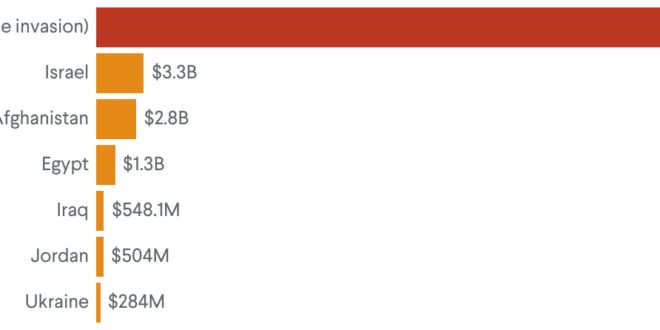Every year, the United States sends billions of dollars in aid—and much more than any other country—to beneficiaries around the world in pursuit of its security, economic, and humanitarian interests.
Heading into 2022, U.S. foreign assistance was driven by various priorities of the Biden administration, including combating climate change, responding to the COVID-19 pandemic, and countering authoritarianism. But since Russia’s invasion in February of that year, Ukraine has become far and away the top recipient of U.S. foreign aid. It’s the first time that a European country has held the top spot since the Harry S. Truman administration directed vast sums into rebuilding the continent through the Marshall Plan after World War II.
Since the war began, the Biden administration and the U.S. Congress have directed nearly more than $75 billion in assistance to Ukraine, which includes humanitarian, financial, and military support, according to the Kiel Institute for the World Economy, a German research institute. The historic sums are helping a broad set of Ukrainian people and institutions, including refugees, law enforcement, and independent radio broadcasters, though most of the aid has been military-related. Dozens of other countries, including most members of the North Atlantic Treaty Organization (NATO) and the European Union, are also providing large aid packages to Ukraine.
Much of the aid has gone toward providing weapons systems, training, and intelligence that Ukrainian commanders need to defend against Russia, which has one of the world’s most powerful militaries. Many Western analysts say the military aid provided by the United States and other allies has played a pivotal role in Ukraine’s defense and counteroffensive against Russia. U.S. and allied leaders consider Russia’s invasion a brutal and illegal war of aggression on NATO’s frontier that, if successful, would subjugate millions of Ukrainians; encourage Russian President Vladimir Putin’s revanchist aims; and invite similar aggression from other rival powers, especially China.
Still, Ukraine has requested certain advanced equipment, such as fighter aircraft, that the United States and other donor governments have been unwilling to provide, worried that doing so could escalate the war. NATO allies are particularly wary of being pulled directly into the hostilities, which would dramatically raise the risk of a nuclear war. However, as the fighting has progressed, they have steadily shed their reluctance to give Ukraine more sophisticated assets, such as battle tanks.
At the one year mark of the war, the Biden administration had provided or agreed to provide Ukraine with a long list of defense capabilities, including Abrams battle tanks, anti-aircraft missiles, coastal defense ships, and advanced surveillance and radar systems.
When compared with the U.S. military assistance to other top recipients, including Afghanistan and Israel, the extraordinary scale of this aid comes into view.
Ukraine Towers Over Other Recipients of U.S. Military Aid
U.S. military assistance to Ukraine since the invasion compared with that to top recipients in 2020
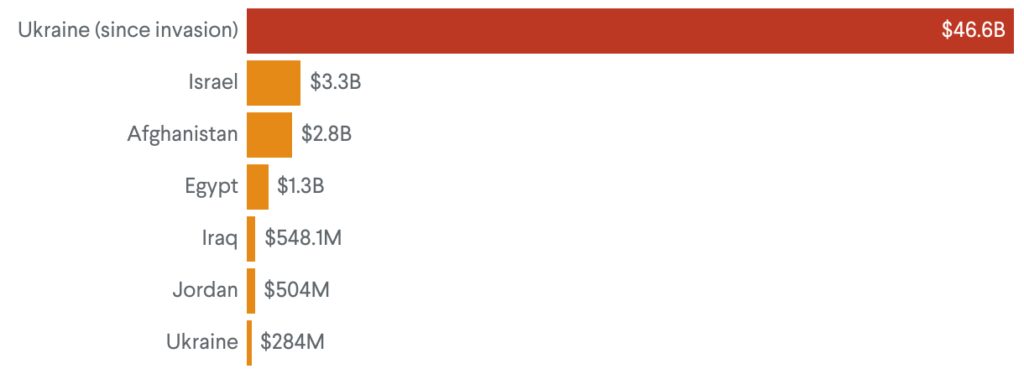
Likewise, when compared with the critical support to Ukraine from other countries, the magnitude of U.S. aid stands out.
Forty-Two Countries Have Provided Military Aid to Ukraine
Countries providing military aid to Ukraine as of January 2023
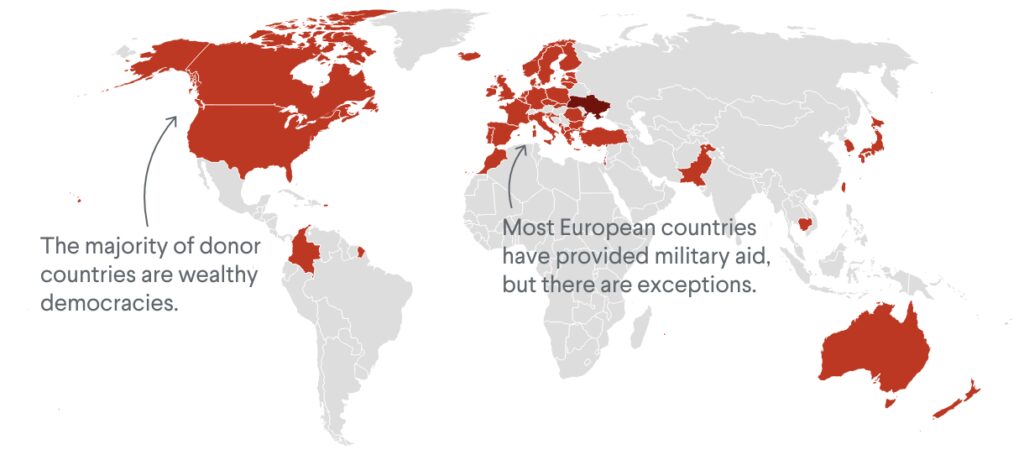
U.S. Aid to Ukraine Far Exceeds That From Other Countries
Bilateral aid from the EU institutions and the top 20 donor countries as of January 15, 2023
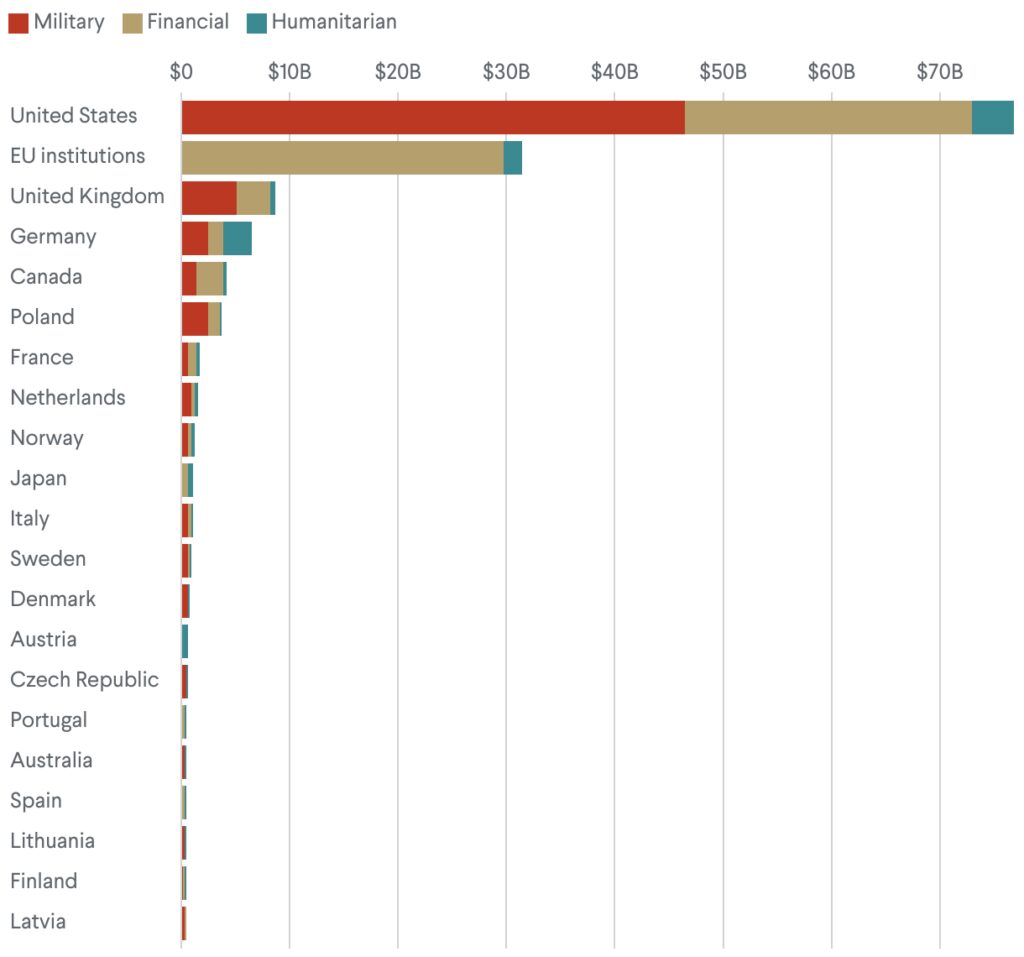
However, some European governments, such as Latvia and Estonia, are making larger financial contributions to Ukraine relative to the size of their own economies.
By Share of GDP, East European Countries Are Giving the Most to Ukraine
Bilateral aid as a share of gross domestic product (GDP) from the EU institutions and the top 20 donor countries as of January 15, 2023
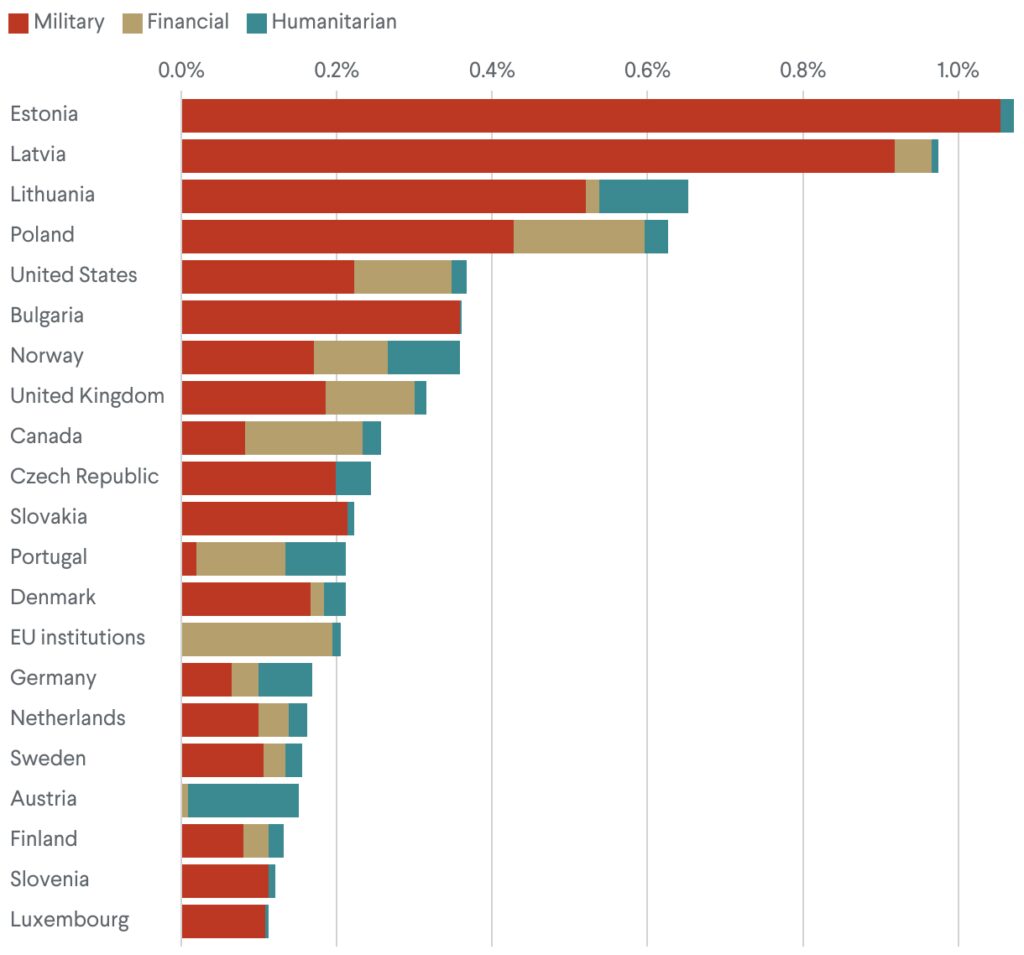
 Eurasia Press & News
Eurasia Press & News
